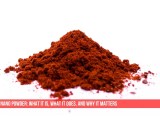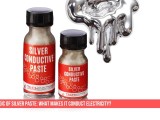
The Complete Guide to Quartz Cuvettes: Handling, Cleaning & Storage
September 12, 2025Think of a cuvette as a tiny, super-clear test tube designed for a specific purpose: accurately measuring light. They are the essential little containers you use in a spectrophotometer or colorimeter machines that shine a beam of light through a liquid sample to figure out what’s in it or how concentrated it is.
Using the wrong cuvette or handling it poorly can lead to very inaccurate results. This guide will show you how to use them correctly and keep them in perfect shape.
What Are You Working With? Know Your Cuvette Type
Not all cuvettes are the same! The most important thing is to match your cuvette to the type of light (wavelength) your instrument uses.
Key Takeaway: If your experiment involves ultraviolet (UV) light, you must use quartz cuvettes. Glass and plastic will block the UV light, potentially ruining your data.
How to Use a Quartz Cuvette Correctly
Follow these steps consistently for optimal results.
Handling: Hold it by the Top!
Always hold the cuvette by its Top, rough (frosted) sides.
Never touch the smooth, clear sides that the light beam will pass through. Fingerprints and smudges will scatter the light, causing errors.
Filling: The Perfect Amount
Fill the cuvette about 3/4 full. This is usually enough to be well above the path of the light beam.
Avoid overfilling, as it can spill into the instrument and damage it.
If your sample is precious, you can use special micro-volume cuvettes that need only a tiny drop.
Wiping: Be Thorough but Gentle
Before placing the cuvette in the instrument, use a lint-free wipe (like a Kimwipe) to dry the outside gently, especially the two clear windows.
This removes any droplets or spills that could also scatter light.
Orientation: Put it in the Right Way
Place the cuvette into the holder so the clear, smooth sides are facing the light source and the detector (the part that “sees” the light).
The frosted sides can face forward and backward.
Many cuvettes have a small white triangle or mark on the Top. Always point this mark towards the front of the instrument. This ensures you place it the same way every time for consistent readings.
How to Clean and Care for Your Quartz Cuvette
Proper cleaning is the most essential part of maintenance.
Cleaning Steps:
Rinse Immediately: As soon as you’re done, empty the cuvette and rinse it 2-3 times with a small amount of the same solvent you used in your sample (e.g., water, ethanol, buffer). This prevents residue from drying and sticking to the surface.
Final Wash: For a deeper clean, you can gently wash with a mild lab detergent and a soft bottle brush designed for cuvettes. Avoid abrasive brushes that can scratch.
Final Rinse: Rinse thoroughly 3-4 times with the pure solvent (e.g., deionized water) to remove all traces of detergent.
Drying: Let it air dry upside down on a clean tissue or in a rack. You can also use a gentle stream of air.
What to AVOID:
Never use strong acids or bases (like concentrated HCl or NaOH) unless necessary, and then only with quartz cuvettes. They can etch and damage the surfaces.
Never use acetone with plastic cuvettes—it will melt them!
Never dry with paper towels or rough cloths, as they can scratch the optical surfaces.
Storage:
Once completely dry, store cuvettes in their original protective cases or a clean, soft container.
This prevents them from knocking into each other and getting chipped or scratched.
Troubleshooting Common Problems
Strange or Inconsistent Readings?
Check for scratches on the clear windows. Scratched cuvettes should be discarded.
Check for fingerprints or smudges. Clean the windows again.
Check for bubbles. Gently tap the cuvette to dislodge any bubbles in your sample before measuring.
My “Blank” Doesn’t Zero Properly?
Your cuvette might be dirty. Clean it thoroughly.
Make sure you are using the same cuvette for your blank and your samples. Even two cuvettes from the same box can be slightly different.
Quick-Reference Checklist
Choose the right type:
- Quartz for UV, Glass/Plastic for visible light.
- Handled by the top, avoiding the clear windows.
- Filled to the correct level (~3/4 full).
- Wiped clean and dry with a lint-free wipe.
- Oriented correctly in the instrument (mark facing front).
- Rinse immediately after use.
- Stored safely in its protective case.


